We do, as a nation, love our charity shops – more than ever it seems.
Lina my partner, who is Russian, would happily spend an entire day in charity shops. When she’s in the UK, she’ll say: “I’m off to Tesco.”
Fine, I get peace for half an hour to write. But four hours later, I realise she’s not back.
I call her. No answer. Eventually she comes home. “Where on Earth have you been?”
“Charity shops!” she says, as her eyes light up, and out tumble the bargains she’s just picked up.
Dating back to 1899, charity shops really came into their own around and during the Second World War.
The Thrift Shop for Everyone opened in Edinburgh in 1937, while the Red Cross opened its first shop in London in 1941. They then mushroomed all over the UK.
Today, there are countless thousands of charity shops in the UK, including the big boys such as Oxfam, Red Cross, British Heart Foundation and numerous cancer support charities.
I have to admit, as a kid I wouldn’t have gone into one. I used to think they were full of junk. Second-hand stuff? No, not for me. It wasn’t until I moved to London in the ’90s and visited Camden Market that I fell in love with second-hand goods. Especially jackets.
I still have an old sheepskin coat I bought in 1996.
There are at least, I believe, six charity shops in Inverurie. Everything from the British Red Cross to Cancer Research. Astonishing really for a town.
I had in advance arranged a meeting at the Garioch Charities Shop. Time to give some coverage to one of the little guys.
It opened its doors 24 years ago in 1998, after a group of individuals who were involved in local good causes said “why don’t we open a charity shop?”. And after looking through the P&J for a shop to rent, they came across 29 High Street, Inverurie, and the rest they say is history.
With around eight volunteers, this little shop has gone from strength to strength. I met with four volunteers: Sue Kinsey, Ethel Conn, Linda McMasters and Shonaid Trail.
I bombarded them with questions and they were happy to answer. Keen to share their passion.
I walked around taking photos of not only inside but also out back where they store the latest batches of donations that come in, in a giant lock-up.
It really is an Aladdin’s cave of bargains.
Clothes, bags, shoes, books – loads of them – jewellery, bric-a-brac, you name, it’s all there. Apart from electrical goods.
On the subject of donations, while they are extremely welcome – after all, it is their lifeblood – they urge individuals to not leave goods out back, as unfortunately for health and safety reasons, they cannot accept them. Please therefore only come with donations during their opening times which are 10am-4pm every day apart from Wednesdays and Sundays.
From my recent experience, there are charity shops and there are charity shops.
When you buy a product in one of the big established nationwide ones, do you actually know where your money goes? I doubt it stays local, it will all go into a big centralised pot then shared out from there.
I’m not saying that’s wrong, just probably the way it is.
It’s also worth taking into account that some big organisations will have managers that get paid a healthy salary. Again, not necessarily wrong, but something to consider.
The ladies told me: “The different between us and some of the big ones is that all the people who work in our shop are volunteers, no one gets paid, not a penny. We pay rent of course, and utility bills, and our accountant gets paid, but basically that’s it. After these costs, all the profit, all the money we raise goes to charity and stays local.
“We also give grants to local groups, but they must be not-for-profit and have a bank account.”
Ever bought a jigsaw or a puzzle from a charity shop only to find that bits are missing? I bet you have. It’s a classic and very frustrating. But the ladies told me: “In our shop anyway, every single puzzle, board game and jigsaw is checked, and none are allowed on sale unless every piece is there. Not a missing piece!”
Good to know.
“I only have one gripe with charity shops,” I said. “I don’t think you charge enough!”
I pointed at numerous items at 50p and said they should be £1. Or £1 and should be two. People would still buy them surely.
“We’re so lucky with our donations, and we also know our customers. We charge what we think our regulars will pay, so charging more doesn’t necessarily mean we will take in more, it could be less. We know our customers.”
They also confirmed: “We only accept cash, and we can account for every single penny that comes across that counter.”
Speaking of counters, I fell in love with it. See my photo. It is old-world beautiful, right out of Are You Being Served.
I pictured John Inman’s Mr Humphries standing behind it. What a gem of a counter. They don’t make ’em like that anymore.
The Garioch Charities Shop doesn’t try to jazz it up, doesn’t try to be modern with fancy lighting, doesn’t ty to make it a stylish boutique, this is a “real” charity shop… you know what I mean? It’s like walking into the shop where Bagpuss used to sit in the window.
“How much do you think we have given to charity from this one little shop?” I was asked.
I had no idea. Bearing in mind that so many items are, in my opinion, so cheap, I said vaguely, “some thousands I’d guess”.
When they told me the figure, I was gobsmacked.
Since 1998, this one shop in Inverurie was given over half a million pounds to local charities. £576,454 and 52p to be precise.
I was, and am, mightily impressed. As I was with the volunteers I met.
How to sum up the ladies who work at this shop? Easy, one word – dedication.
Go pay them a visit at 29 High Street, Inverurie. And while you’re at it, visit the at least half a dozen other charity shops in this bustling town. Pick yourself up a bargain, and at the same time support a worthwhile cause. It’s a win-win for all.
There’s often guilt associated with shopping these days. Be it contributing to the carbon footprint when ordering online, or online shopping in general which hurts small, local businesses, or supermarkets that wrap everything in single-use throw-away plastic.
But shopping at charity shops… it’s guilt free.
We could call it “feel-good shopping”.
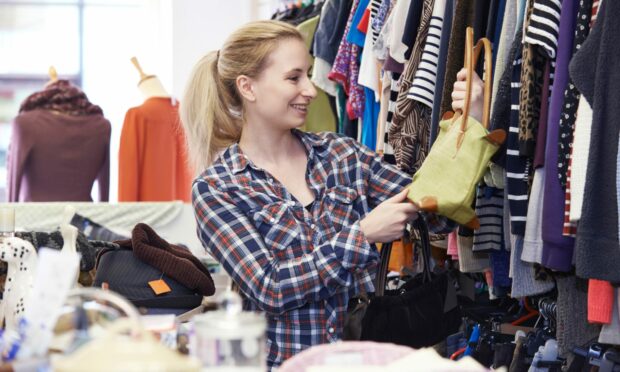
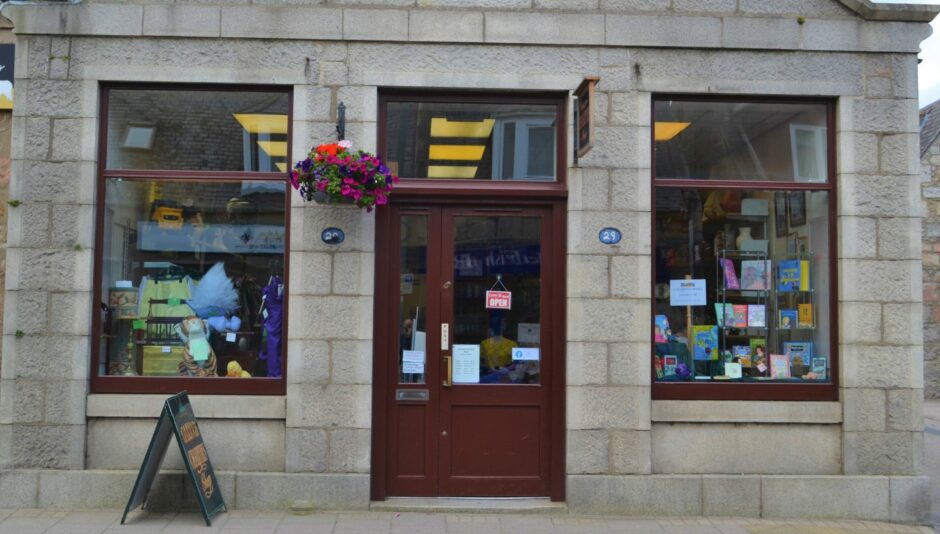
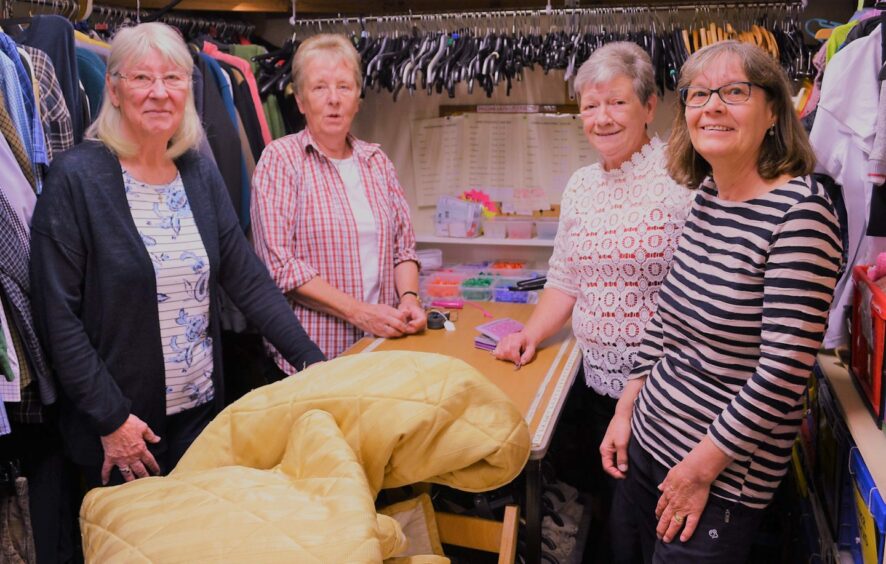
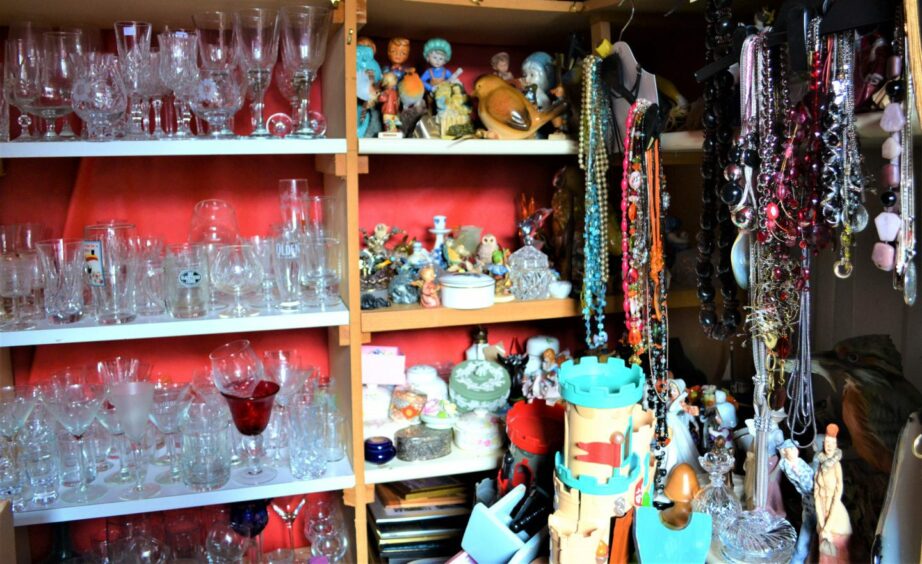
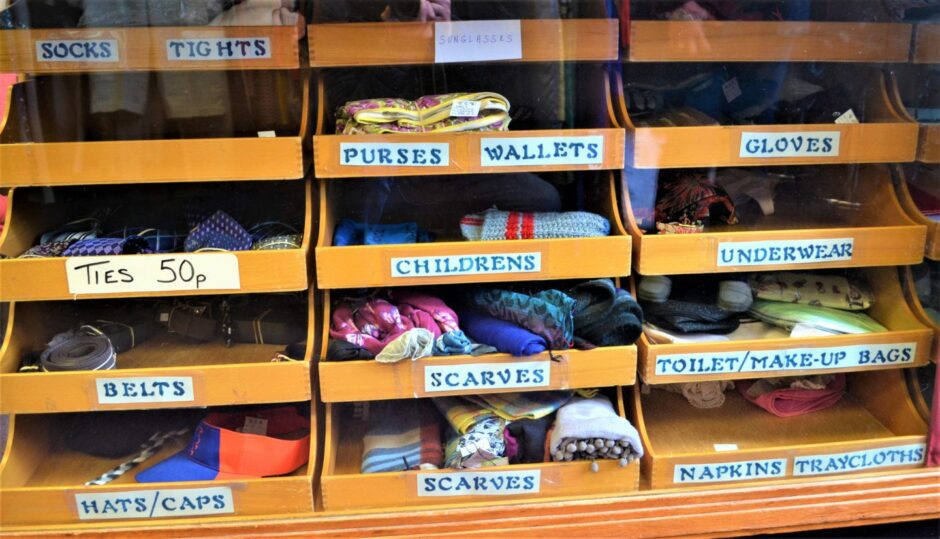
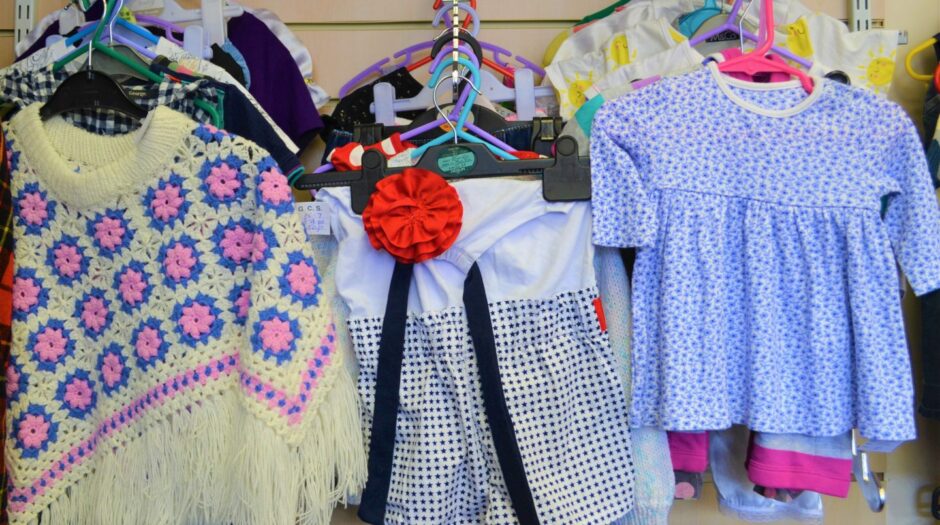
Conversation